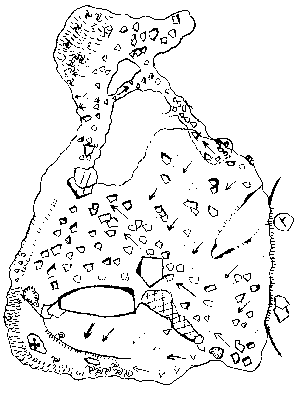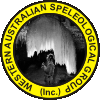The cave area is contained mainly within the Yanchep National Park but extends south to the semi-residential Wanneroo area. There is currently only one tourist cave in the National Park, namely Crystal Cave, though there is talk of reinstating Yonderup Cave as a tourist cave in the redevelopment plan for the area. There are also many 'wild', mainly small caves. The area has possibly as many as 1000 caves and karst features some of which are waiting to be rediscovered such as 'The Catacombs'. The limestone here is only 10m above the water-table resulting in frequent collapses. This restricts the size of the stream caves. Caves are of the small, crawly inclined fissure type.
Caves occur mainly in the western section of the park. The exception to this rule is Gibb Cave YN 140, entrance to which is gained by a small solution pipe. The cave is large and well decorated for Yanchep and well worth a visit. Other notable caves in the park are Yanchep Cave, with its obvious cave fauna, old bat domes and large chambers; Mambibby Cave which has been subject to extensive vandalism, both official and unofficial; Loch Overflow, which takes water from Loch McNess; Minnie's Grotto, Surprise Cave and Concinna cave, which have some of the best Speleothems to be seen in the Yanchep karst. The almost water-filled Water Cave provides a cooling end to a hot summer's day at Yanchep. Also to be noted in this cave are the Galaxias (fish) and Gilgies (freshwater crayfish) plus the iron-stained 'Trog's End' flowstone.
A newly located cave on a mining lease is Gidgee Karupa (Spear Cave). The map below shows a little of the detail in the cave. The cave was so named following the discovery of an aboriginal spear shaft in the cave.

GEOLOGY AND GEOMORPHOLOGY OF YANCHEP
East of Yanchep area is a vast area of sandplain at the base of the Darling Fault Scarp. This area serves as a catchment for the Gnangara water mound, a feature of great importance in the future of Perth's water supply. The slope of this mound increases in the area of the Yanchep caves and the water moves mainly as streams down this gradient. The numerous enclosed water-logged depressions and lakes within the karst no doubt play a role in recharging karst water and may themselves be the result of a series of cavern collapses and stream diversions. Springs have been seen in the sea west of Yanchep.

